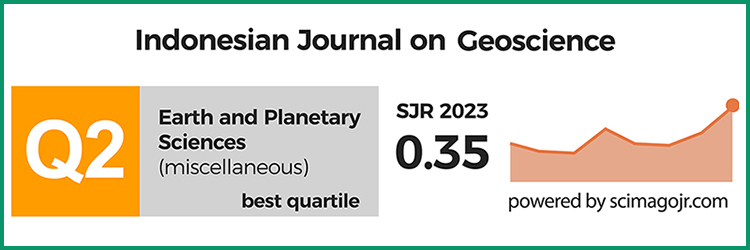The Investigation of Ultic Horizon on Andisols Derived from the Eruption of Mount Tilu (Pleistocene, Basaltic) in West Java, Indonesia
DOI:
https://doi.org/10.17014/ijog.9.2.159-172Abstract
DOI:10.17014/ijog.9.2.159-172
Ultic is the soil characteristics in soil taxonomy when argillic or kandic horizon is found within the depth of 125 cm with the base saturation of less than 35 % on the overall of upper 50 cm. The purpose of this research is to investigate whether ultic horizon was found in the soil developing from the Pleistocene eruption of Mount Tilu (basaltic parent materials), in West Java, Indonesia. The method used was descriptive and comparative surveys of three profiles in the area around Mount Tilu, including the investigation of andic soil properties and the formation of argillic or kandic horizon. The result showed that the soils fulfilled the requirements of andic soil properties to be classified as Andisols. Soil never dried for ninety days cumulative (udic) to be classified as Udands. There were Fulvudands and Hapludands in this location. Accumulation of clays was more than 1.2% higher than the overlying horizon found at the depth of 90, 79, and 51 cm in those three profiles. Base saturation in upper 50 cm ranged from 1.07 to 6.86 cmol kg-1 or less than 35 %, making the soils were classified as Ultic Fulvudands and Ultic Hapludands. The high rainfall in the tropics and Pleistocene age led to the leaching of clays for a long period to form the argillic horizon. The influence of rain was stronger than the basaltic parent materials in forming Ultic Hapludands. Basaltic parent material was not strong enough to produce base saturation of more than 35 %.



















